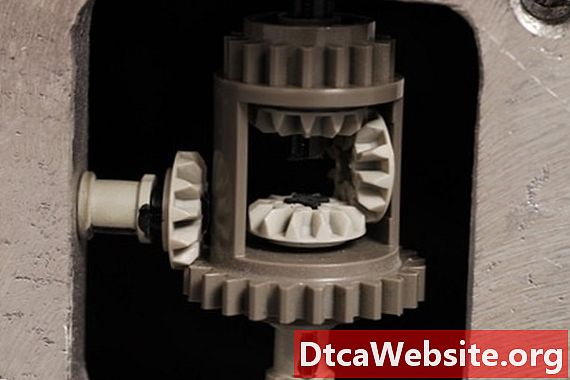
Contenu

The throttle position sensor is one of the most crucial components of any fuel injection system, right after the computer and fuel injectors in terms of importance. GM Sensors have traditionally been outsourced to overseas manufacturers, the same ones who supply throttle position sensors to other makes like Ford and Toyota. As such, theirs are generally no less reliable than anyone elses, but will eventually fail over time.
Function and Location
Throttle position sensors (TPS) are usually located on the large butterfly valve that controls airflow into and out of an engine, called the throttle-body. These sensors attach directly to the valve shaft where it sticks out of the throttle body and tell the computer how far the throttle has been opened. This information is crucial in controlling the air/fuel ratio.
Inconsistent Idle
The first and most telling symptom of a failing TPS is an idle that rises and falls sporadically or maintains a very high or low RPM. This condition can be extreme enough to cause stalling or to cause the tires to chirp when the transmission is engaged. It can be difficult to tell the difference between a failing TPS and a malfunctioning or clogged idle air control (IAC) valve, so electrical testing and cleaning of the IAC is recommended.
Engine Stalling
As mentioned, a failing TPS can result in random engine stalling at idle, but this can also happen under driving conditions. Most often this will occur under hard braking, since the computer assumes normal operation and continues to deliver cruise-amounts of fuel when the throttle butterfly is shut. If deceleration is slow enough, the computer may be able to maintain proper air-fuel ratio by using data from the oxygen sensor(s), but efficacy of this approach varies by vehicle.
Erratic Shifting
Transmissions are programmed to increase shift firmness and the RPM at which the transmission shifts according to acceleration demands. A car that shifts very hard and at high RPM under normal driving may be experiencing a TPS failure, as may one that accelerates sluggishly and shifts low when the gas pedal is floored.
Maladjusted TPS
If GM TPS sensors have any inherent flaws, it is a tendency to slip out of adjustment. Though this can happen to any car, many GM owners have reported such a failure. The TPS must be adjusted (rotated) so that it reads idle and full-throttle positions properly, or it may appear to be malfunctioning. Try adjusting the TPS before replacement to save a few dollars.


